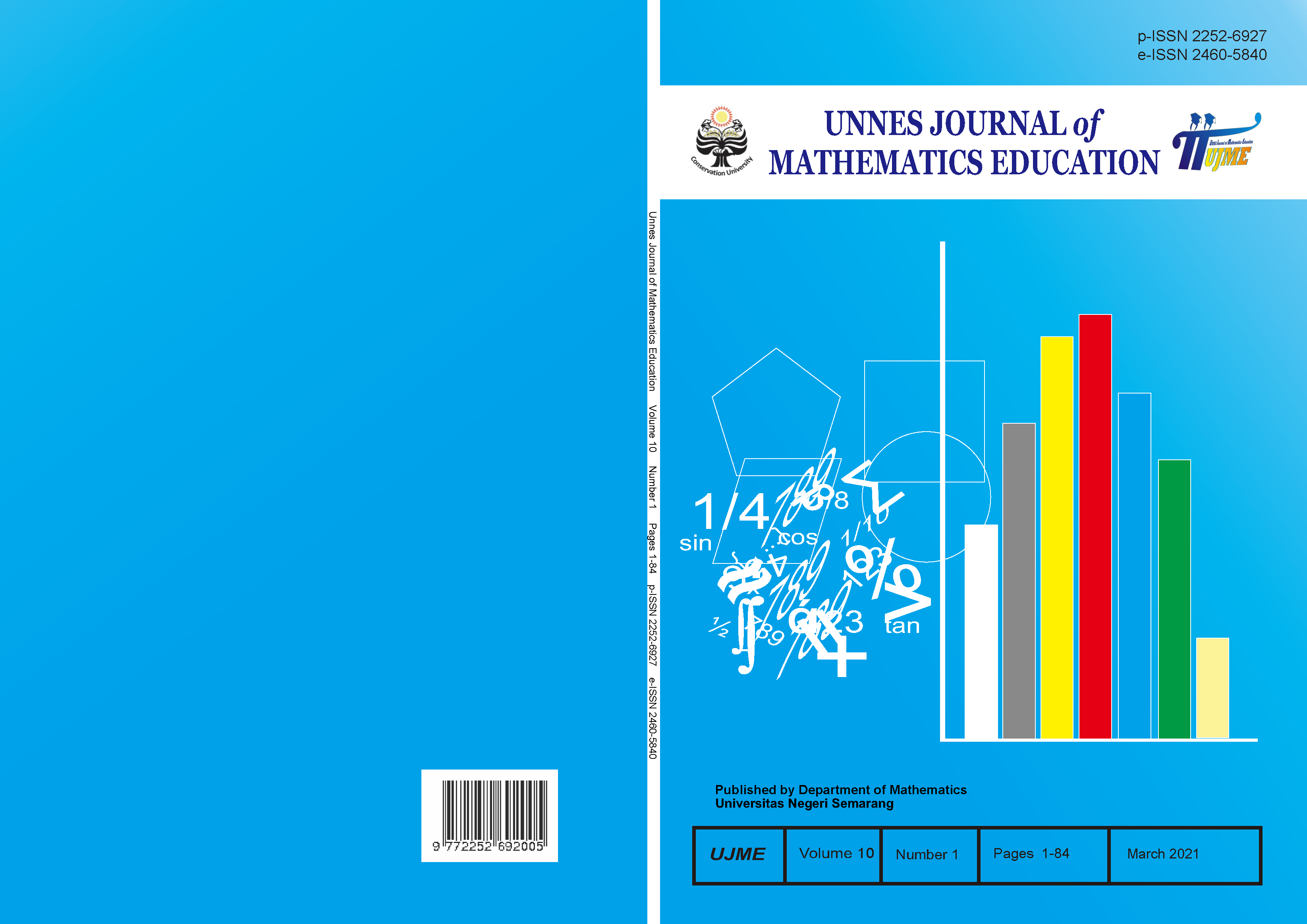HOTS of VIII class students reviewed from creative thinking process of the Osborn model in PjBL
##plugins.themes.academic_pro.article.main##
Abstract
The aim of this study was to find out how the effectiveness of PjBL towards students' HOTS and to find out how the HOTS process of students in terms of the Osborn Model thinking process. This study uses mixed methods using a pre-experimental research design that is used is the one-shot case study using a sequential explanatory strategy. The population used in this study were all 8th-grade students at one junior high school in Semarang in the odd semester of the 2019/2020 school year. The research subjects were students of class 8A in a Junior High School in Semarang. Methods of data collection were carried out using tests, interviews, and observations. The results of the quantitative research showed that the ability of students in the HOTS aspect who received PjBL learning did not achieve actual passing grade. It can be concluded that the project-based learning model is not effective against students' HOTS. The results of the qualitative research indicate that there are descriptions of the HOTS process at various levels of analysis and evaluation. The diversity of HOTS process descriptions is shown in the fact-finding idea-making stage, some subjects who can achieve the evaluation level and get high scores to choose then write down information to solve the problem. In the idea-generating stage, subjects who have reached the evaluation level in HOTS tend to do one thing to find ideas, read repeatedly to find ideas and do not move to other problems if they don't find ideas. In the idea evaluation stage, the subject with the level of analysis does not check the complete results. the subject with the level of evaluation checks all the results of completion or some of the results of completion, some students pay attention to writing the results of the completion so that it is easy to understand.
##plugins.themes.academic_pro.article.details##
References
Arlianty, W. N., Febriana, B. W., Diniaty, A., & Fauzi’ah, L. (2018). Student profile in completing questions based on cognitive level of bloom’s taxonomy by Anderson and Krathwohl. In AIP Conference Proceedings (Vol. 2026, No. 1, p. 020063). AIP Publishing LLC.
Bell, S. (2010). Project-based learning for the 21st century: Skills for the future. The clearing house, 83(2), 39-43.
Brookhart, S. M. (2010). HOW TO ASSESS HIGHER-ORDER THINKING SKILLS IN YOUR CLASSROOM. In ASCD. https://doi.org/10.1177/002205741808801819
Kemendikbud. 2013. Kurikukum 2013. Jakarta: Kementrian Pendidikan dan Kebudayaan
Krathwohl, D. R. (2002). A revision of Bloom's taxonomy: An overview. Theory into practice, 41(4), 212-218.
Lewy, L., Zulkardi, Z., & Aisyah, N. (2009). Pengembangan soal untuk mengukur kemampuan berpikir tingkat tinggi pokok bahasan barisan dan deret bilangan di kelas IX akselerasi SMP Xaverius Maria Palembang. Jurnal Pendidikan Matematika, 3(2), 14-28.
Nuha, M. A., Waluya, S. B., & Junaedi, I. (2018). Mathematical creative process wallas model in students problem posing with lesson study approach. International Journal of Instruction, 11(2), 527–538. https://doi.org/10.12973/iji.2018.11236a
Organisation for Economic Cooperation and Development. 2016. PISA 2015 Result in Focus. Tersedia di http://www.oecd.org/pisa/PISA-2015-Indonesia.pdf [diakses 20-01-2019].
Peraturan Menteri Pendidikan dan Kebudayaan (Permendikbud) Nomor 35 tahun 2018 tentang Perubahan Atas Peraturan Menteri Pendidikan dan Kebudayaan Nomor 58 Tahun 2014 tentang Kurikulum 2013 Sekolah Menengah Pertama/Madrasah Tsanawiyah. 2014. Jakarta: Menteri Pendidikan dan Kebudayaan.
Purnomo, D. J., Asikin, M., & Junaedi, I. (2015). Tingkat Berpikir Kreatif Pada Geometri Siswa Kelas VII Ditinjau Dari Gaya Kognitif Dalam Setting Problem Based Learning. Unnes Journal of Mathematics Education, 4(2).
Rietzschel, E. F., Nijstad, B. A., & Stroebe, W. (2007). Relative accessibility of domain knowledge and creativity: The effects of knowledge activation on the quantity and originality of generated ideas. Journal of experimental social psychology, 43(6), 933-946. https://doi.org/10.1016/j.jesp.2006.10.014
Sari, D. C. (2015). Karakteristik Soal TIMSS. Seminar Nasional Matematika Dan Pendidikan Matematika UNY, 303–308.
Setiawan, H., Dafik, & Lestari, N. D. S. (2014). Soal matematika dalam PISA kaitannya dengan literasi matematika dan keterampilan berpikir tingkat tinggi. In Prosiding Seminar Nasional Matematika, Universitas Jember.
Siew, N. M., & Chong, C. L. (2014). Fostering Students' Creativity through Van Hiele's 5 Phase-Based Tangram Activities. Journal of Education and Learning, 3(2), 66-80.
Sunaringtyas, A. D., Asikin, M., & Junaedi, I. (2017). The Student’s Analysis of Creative Thinking Process in Solving Open Problems viewed from Wallas Model on Problem Based Learning Model. Unnes Journal of Mathematics Education, 6(3), 287–293. https://doi.org/10.15294/ujme.v6i3.16084
Warr, A., & O'Neill, E. (2005, April). Understanding design as a social creative process. In Proceedings of the 5th Conference on Creativity & Cognition (pp. 118-127). doi:10.1145/1056224.1056242
Wibawa, R. P., & Agustina, D. R. (2019). Peran pendidikan berbasis higher order thinking skills (hots) pada tingkat sekolah menengah pertama di era society 5.0 sebagai penentu kemajuan bangsa indonesia. EQUILIBRIUM: Jurnal Ilmiah Ekonomi dan Pembelajarannya, 7(2), 137-141.
Widodo, T., & Kadarwati, S. (2013). Higher order thinking berbasis pemecahan masalah untuk meningkatkan hasil belajar berorientasi pembentukan karakter siswa. Jurnal Cakrawala Pendidikan, 5(1).
